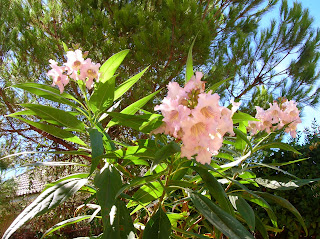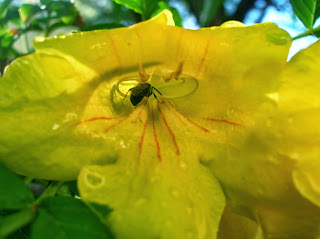



Origen: Centroamérica y Norte de Sudamérica
La petrea es una trepadora tropical que puede alcanzar 6 m de altura, aunque necesita un soporte para trepar.
Florece al final de la primavera y en verano. Las flores duran sólo un día pero los cálices se vuelven grisáceos y permanecen en la planta.
Sus hojas tienen un tacto rugoso, por eso en inglés se la conoce como trepadora de "papel de lija". También se la conoce como "corona (de flores) púrpura o corona de la reina.
Es estrictamente tropical por lo que sólo resiste heladas débiles y ocasionales.
He leído que se reproduce por esquejes, pero no lo he conseguido.
He leído que se reproduce por esquejes, pero no lo he conseguido.
English version:
Origin: Central America and West Indies
Common names: purple wreath, queen´s wreath, sandpaper vine
Petrea is a woody stemmed climber which grows to a height of 6m, needing support to climb.
It flowers at the end of spring and summer. Flowers last just a single day, but calyxes turn greyish and stay in the plant.
Its leaves have a rough touch, hence the name of "sandpaper".
It´s a strictly tropical plant so it withstands only light and occasional frosts. This winter frost burned a good part of the plant which hasn´t flowered yet. The pictures are from last year.
I´ve read propagation is from cuttings but we haven´t succeed yet.
Actualizado a 05/07/2011
Actualizado a 05/07/2011














































